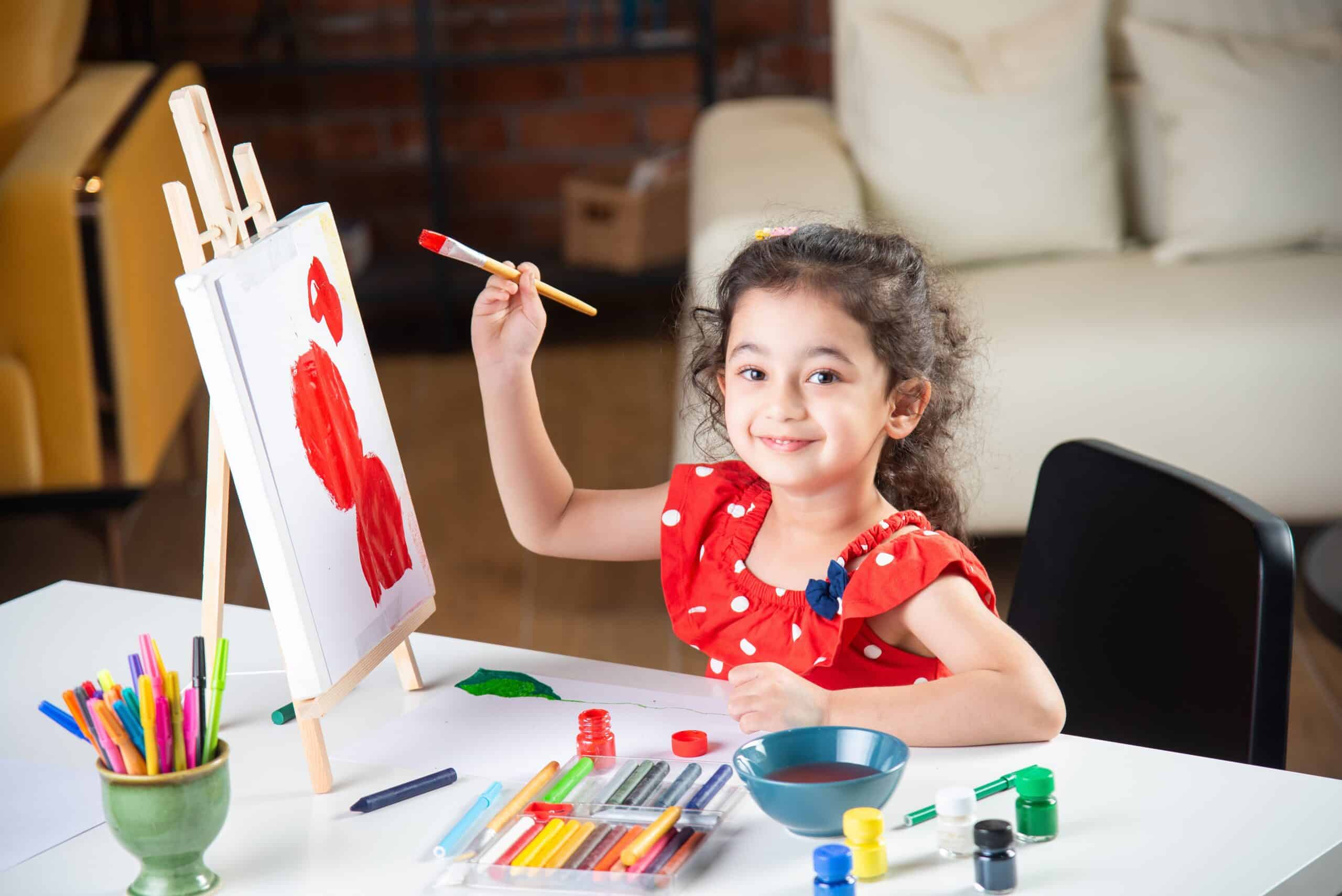What if creativity was the secret to stronger academics?
When families think of academic success, they often picture math drills, grammar rules, or reading logs. But what if the key to sharper thinking, stronger memory, and better performance in those subjects lies in something unexpected: music class? Art projects? Theater scripts?
At Carden Memorial School, we know that the arts aren’t extra. They’re essential. They enrich the mind, challenge the intellect, and develop skills that students carry into every academic subject.
Music education benefits go far beyond the stage.
Music is more than performance. It engages the brain in ways that support learning. Research shows that students who study music strengthen connections between the left and right hemispheres of the brain. This activity supports skills such as:
Music strengthens:
- Pattern recognition (critical for math)
- Listening and concentration (vital for reading)
- Memorization and sequencing
- Emotional regulation and resilience
Learning an instrument or singing in a choir also builds discipline. Practice becomes a daily habit, and with it comes focus, perseverance, and delayed gratification; traits that shape both character and academic performance.
Inside the brain: what’s happening when a child makes music
Neurologists often describe music as a “full-brain” activity. When a student plays the piano, for example, the brain processes pitch, rhythm, timing, visual cues, motor coordination, and auditory feedback — all at once.
Music activates regions linked to:
- Language development
- Memory consolidation
- Motor planning
- Executive function
These aren’t isolated benefits. They directly support academic functions like spelling, problem-solving, reading comprehension, and test-taking under pressure.
Art and learning go hand in hand.
Drawing, painting, and design develop fine motor skills, visual-spatial awareness, and abstract thinking. These abilities form a strong foundation for success in geometry, science, and engineering.
The visual arts also teach children how to observe the world closely. They learn to notice patterns, details, and relationships, which helps them become more attentive, thoughtful learners in every subject.
The benefits of art include:
- Strengthened problem-solving
- Improved hand-eye coordination
- Greater self-expression and confidence
- Enhanced ability to interpret and analyze complex information
How the arts support academic growth — subject by subject
Reading and Language Arts
Music supports phonological awareness — the ability to hear and manipulate sounds, a core skill in learning to read.
Art develops vocabulary, descriptive language, and narrative structure as children learn to describe what they see or create.
Math
Rhythm and meter introduce students to fractions and patterns.
Visual arts support geometry, spatial reasoning, and symmetry.
Science
Drawing and sketching develop observation skills crucial for the scientific method.
Music supports understanding of acoustics, wave theory, and patterns in nature.
The classical education approach honors the arts as intellectual tools.
In classical education, the arts are closely linked to academic achievement. Students learn to analyze, interpret, and communicate through music and art, gaining skills that strengthen their academic work.
A child studying poetry learns rhythm and tone. A student drawing a botanical illustration learns scientific observation. A drama student memorizing lines strengthens verbal fluency and empathy.
At Carden Memorial School, the arts are integrated into the learning process, not added on after the “real work” is done. Because the arts are real work.
Creative education builds critical thinkers.
Music and art require students to make choices — to interpret, evaluate, and reflect. These skills are foundational to critical thinking, a cornerstone of academic success.
Through the arts, students learn to:
- Self-assess their own work
- Attend to nuance and detail
- Revise and refine their thinking
- Appreciate structure, beauty, and clarity
These habits carry over into writing essays, solving word problems, and analyzing texts. In short, the arts build thinkers.
Historical roots: why the arts have always been part of classical education
In the tradition of classical education, music and visual art are not modern enhancements; they are original pillars. In ancient Greece and Rome, the trivium (grammar, logic, rhetoric) was followed by the quadrivium: arithmetic, geometry, astronomy, and music.
Music was seen not only as a performing art, but as a way to understand cosmic order, mathematical ratios, and harmony, both literal and philosophical. To teach music was to cultivate the soul.
At Carden Memorial School, we preserve this vision. Music and art aren’t side subjects. They are central to the formation of the whole child.
Students who study the arts perform better — and feel better.
Numerous studies show that students who are actively involved in music and visual arts outperform their peers in standardized testing, reading comprehension, and problem-solving.
Arts-engaged students report:
- Greater confidence
- Lower stress levels
- More motivation to learn
- Increased school engagement
When learning feels connected to beauty, purpose, and expression, children show up differently. They invest more. They enjoy the process. And they grow both intellectually and personally.
Real-world application: from the studio to the classroom to life
A student who learns to focus on a difficult piece of music will have an easier time focusing on a math problem. A child who paints with detail learns to pay close attention in science class. A student who writes and performs a script builds vocabulary, empathy, and presentation skills.
These are not abstract connections. They are observable, measurable, and real.
At Carden Memorial School, we don’t separate art from academics.
We teach music theory and history alongside vocal performance. We teach drawing techniques alongside biology and geometry. Our students sing in choirs, paint with intention, and see the arts as part of what it means to be an educated person.
Why? Because a well-rounded education is not about doing more, it’s about doing what matters. And the arts matter.
What families can do at home to support music and art education
You don’t need to be a professional musician or artist to help your child engage with the arts. A few intentional steps can make a lasting impact.
5 Ways to Support the Arts at Home:
- Play classical or instrumental music during daily routines
- Visit a local art museum or concert as a family outing
- Encourage your child to keep a sketchbook or music journal
- Include art supplies or sheet music in playtime
- Celebrate your child’s creative work with the same enthusiasm you show for academic grades
The balance of skill and soul: what the arts really teach
The arts teach technique — how to sing in tune, how to hold a brush, how to stay on tempo. But they also teach something deeper: how to connect. How to care. How to contribute beauty and meaning to the world.
These lessons stay with students long after graduation. They become more empathetic coworkers, more thoughtful leaders, more complete human beings.
Let’s raise students who think clearly and create beautifully.
The connection between the arts and academics isn’t just theoretical — we see it every day. Students who engage in music and visual arts grow into more capable readers, more confident speakers, and more creative problem-solvers.
They’re not just learning; they’re flourishing.
Want to see how the arts support academic success in action?
Visit cardenmemorialschool.com to explore our curriculum and discover how the arts are woven into every stage of your child’s learning journey.




